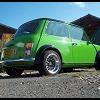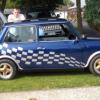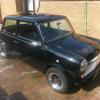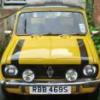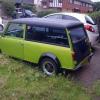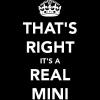
Engine Swap How Easy Is It?
#1

Posted 01 January 2013 - 03:12 PM
I guess it isnt as simple as lift one out and put a bigger engine in. what other parts of the car will i need to change/replace/upgrade ??
Also some things to check when buying a second hand engine would be appreciated.
cheers
#2

Posted 01 January 2013 - 03:16 PM
#3

Posted 01 January 2013 - 03:35 PM
#4

Posted 01 January 2013 - 04:16 PM
always get a engine you can see running or test is even better. once you get it you might as well change things like crank seals and clutch as these are hard to do in the car. things that need doing for the swap is
top rad mount.
shorten the link pipe
#5

Posted 01 January 2013 - 04:58 PM
I would suggest changing everything in sight that wears while the engine is out, i.e. both mounts, top and bottom steady bar bushes, various hoses, etc, and give everything a good clean and rust prevention as needed. With the engine out, it is a convenient time to fit things like solid subframe mounts (all, or none, never half solid and half rubber, and poly are no good at all here), and while doing that, swap the steering rack, only if it will be needed soon, plus any other maintenance needed around the front subframe area.
As already suggested, before you start treat the new engine to such consumable bits as might be needed soon, i.e. all accessible oil seals, gearchange rod seal upgrade kit, possibly new clutch, and new fan belt.
Be prepared to deal sensibly with the driveshafts, and under no circumstances ever mix parts from different pot joints, even if they look the same. The preferred way is to keer your existing shafts intact, as you will know that they are good, and extract the pots from the diff. Undo the hubs from top and/or bottom arms to do that, not the bodger's way of just relying on something seperating as the engine is lifted. It means thet they will go back in to the new diff without any fuss and bother. The need not be taken out of the subframe.
Apart from any maintenance activities, which can take advantage of the accessibility while the engine is out, it really is a case of undoing the old and lifting it out, lowering the new in and doing everything up.
I recommend getting an insurance quote before starting the work just in case it will turn out to be more than you were hoping.
#6

Posted 01 January 2013 - 05:00 PM
#7

Posted 01 January 2013 - 08:34 PM
#8

Posted 01 January 2013 - 10:12 PM
#9

Posted 02 January 2013 - 10:07 AM
Parts you will need to swap complete the conversion are, carburettor with airbox, inlet and exhaust manifolds, full exhaust pipe, radiator top bracket and hose, breathers and piping are different, flywheel housing, the clutch may be different but any complete set will work,
Parts you could use from your 998 are wiring, the engine/gearbox mounts, alternator, fuel pump, water pump, radiator, driveshafts and brake setup.
I also recommend asking insurance company for a quote before doing this as anyone under 25 will pay a hefty price for this modification.
#10

Posted 03 January 2013 - 10:18 PM
#11

Posted 03 January 2013 - 10:47 PM
#12

Posted 22 January 2013 - 12:52 AM
#13

Posted 22 January 2013 - 08:10 AM
You divide by 5, not 10, because the diff is causing one output to move twice as far as normal while the other is locked. You only need 10 turns to get decent accuracy, it can be done with less if you can measure fractional turns of the crankshaft somehow.
1 user(s) are reading this topic
0 members, 1 guests, 0 anonymous users




